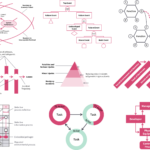- RESEARCH
- SYSTEM SAFETY | ACCIDENT MODELING/ANALYSIS | LITERATURE REVIEW
- VRSS Lab | School of Aeronautics & Astronautics | Purdue University
Accident (Causation) Models
Accident Causation Models are essential abstractions of reality that explicitly or implicitly shape our understanding of how and why accidents occur. These models guide practices across engineering, management, and policy-making aimed at prevention. Models range from early sequential chain-of-events concepts (like the Domino Model) to modern systemic approaches (like STAMP), all based on the fundamental assumption that accidents are not random but follow discoverable patterns. Their primary goals are to explain, communicate findings, and serve as a foundation for predictive risk assessment and the design of safety measures.
Issues with Existing Model Reviews/Classifications
Reviews of accident models are plagued by problems that prevent objective comparison. Key issues include:
Logical Inconsistency and Ambiguous Definitions: The common “linear vs. nonlinear” dichotomy is confusing, especially given the distinct meaning of “linear” in mathematics. It often inaccurately describes unidirectional causality as opposed to mathematical proportionality.
Inappropriate Terminology: Terms like “sequential” or “unidirectional” are more accurate than “linear”. Furthermore, technical terms from graph theory are often used inconsistently; for instance, feedback loops (cycles) are frequently mislabeled, potentially hindering quantitative analysis.
Ill-Defined and Promotional Labels: Labels such as “system-related” (systemic, systems-based, etc.) are frequently used without a clear, consistent definition, effectively serving as substitutes for “better” or “cutting-edge” models, thereby lacking objectivity.
Mutually Non-Exclusive Categories: Existing typologies lack logical consistency, using labels that are not necessarily mutually exclusive, making it difficult to categorize models definitively.
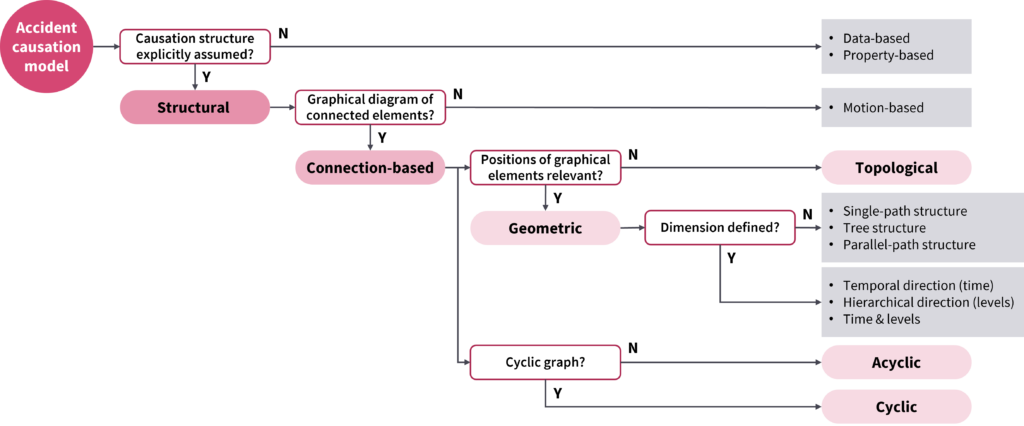
Alternative Typology Questions
To overcome these classification flaws and provide an objective perspective, this research developed a novel typology based on a decision tree of mutually exclusive questions focused on a model’s underlying assumptions and graphical structures.
The key questions that form this classification map include:
(1) Causation Structure: Does the model explicitly assume a predefined structure (structural) or rely on data/properties (non-structural)?
(2) Visual Representation: If structural, is it represented as a diagram of connected elements (connection-based) or as a continuous movement across a state space (motion-based)?
(3) Spatial Semantics: If connection-based, are the geometric positions of elements relevant (geometric) or only the interconnections (topological)?
(4) Cyclicity: Does the model contain cyclic graphs (feedback loops), indicating the ability to represent bidirectional interactions and control concepts?
This alternative approach helps identify a model’s core assumptions, its strengths, limitations, and areas for future research, regardless of its historical period or popularity.
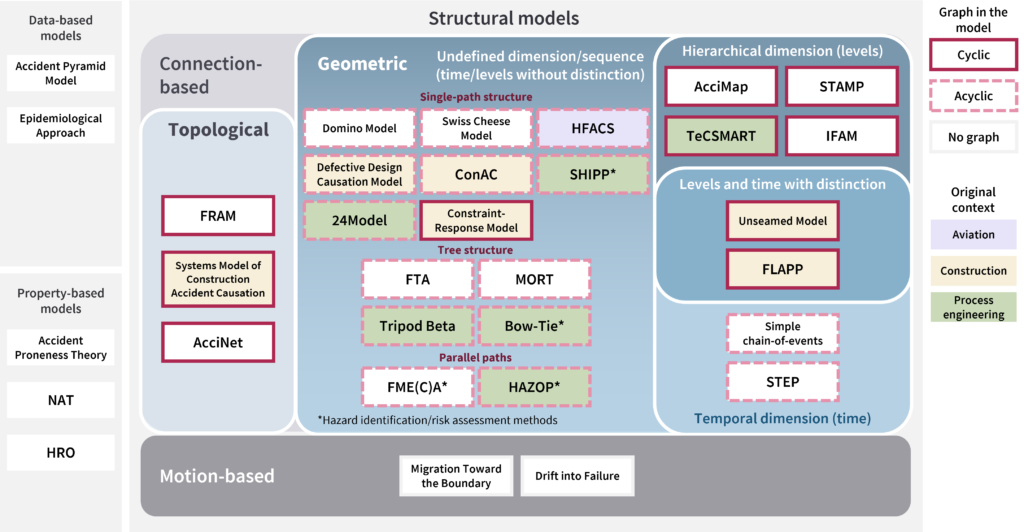
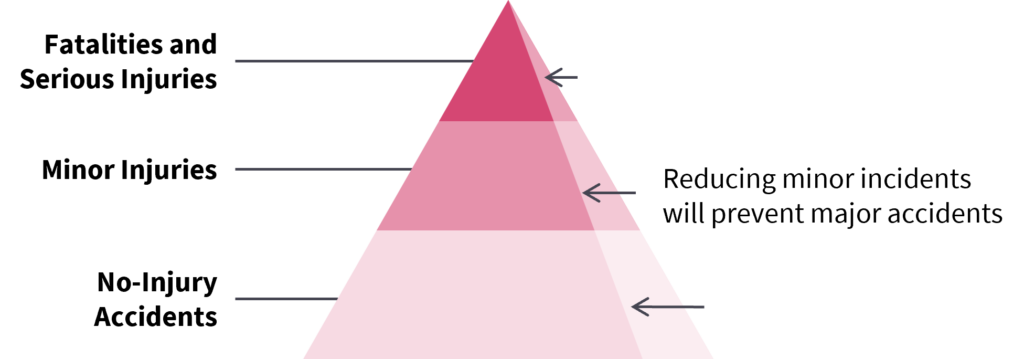
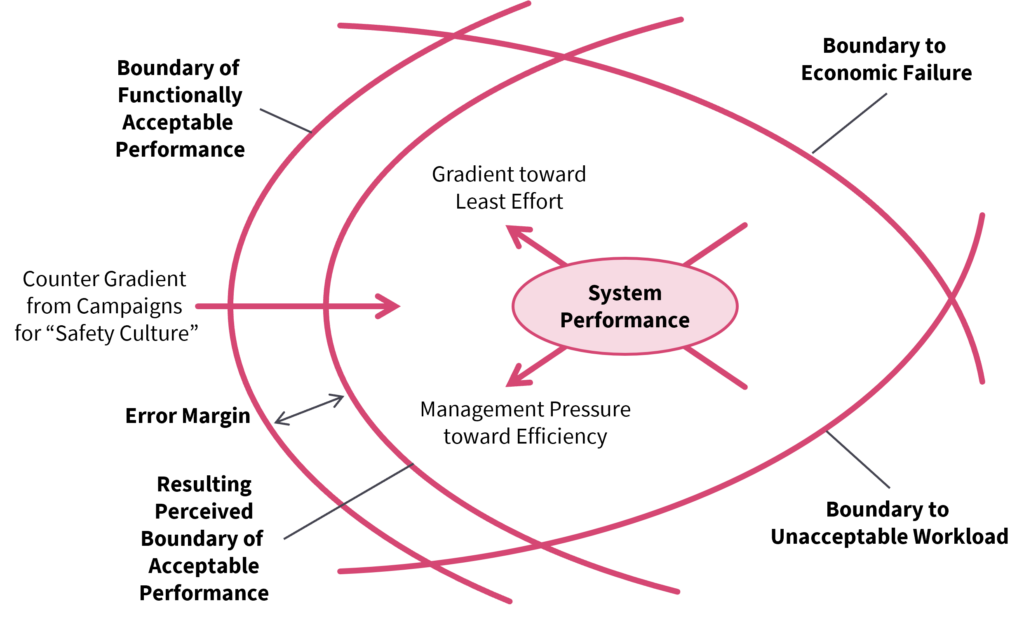
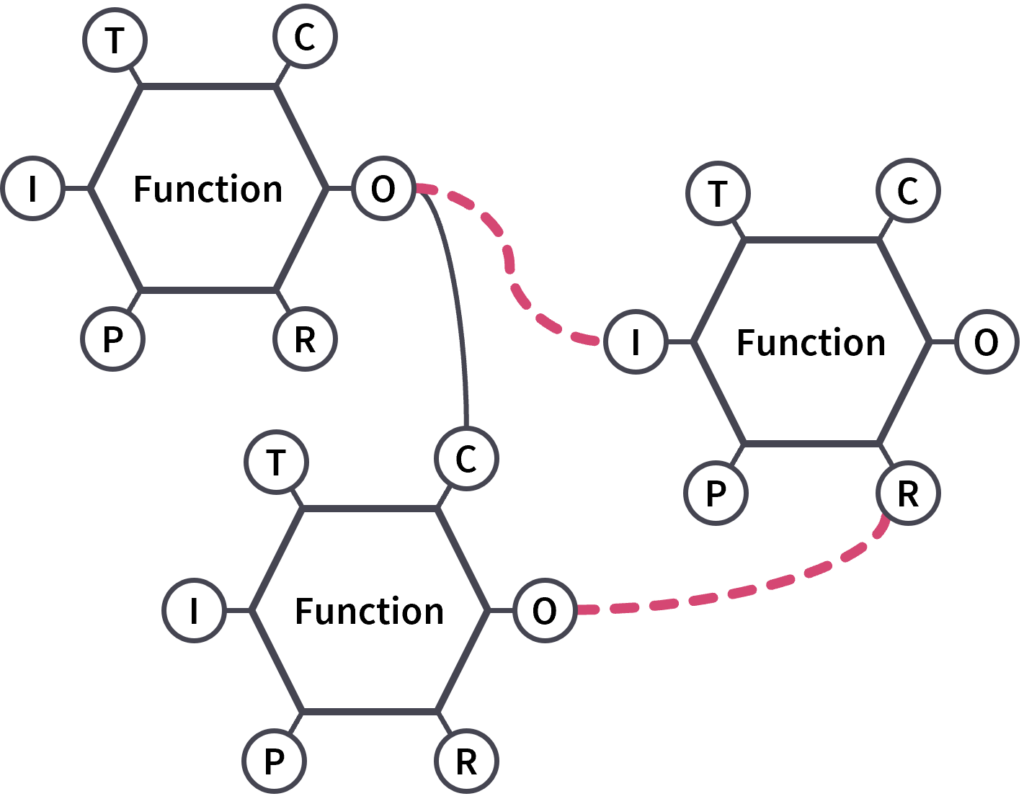
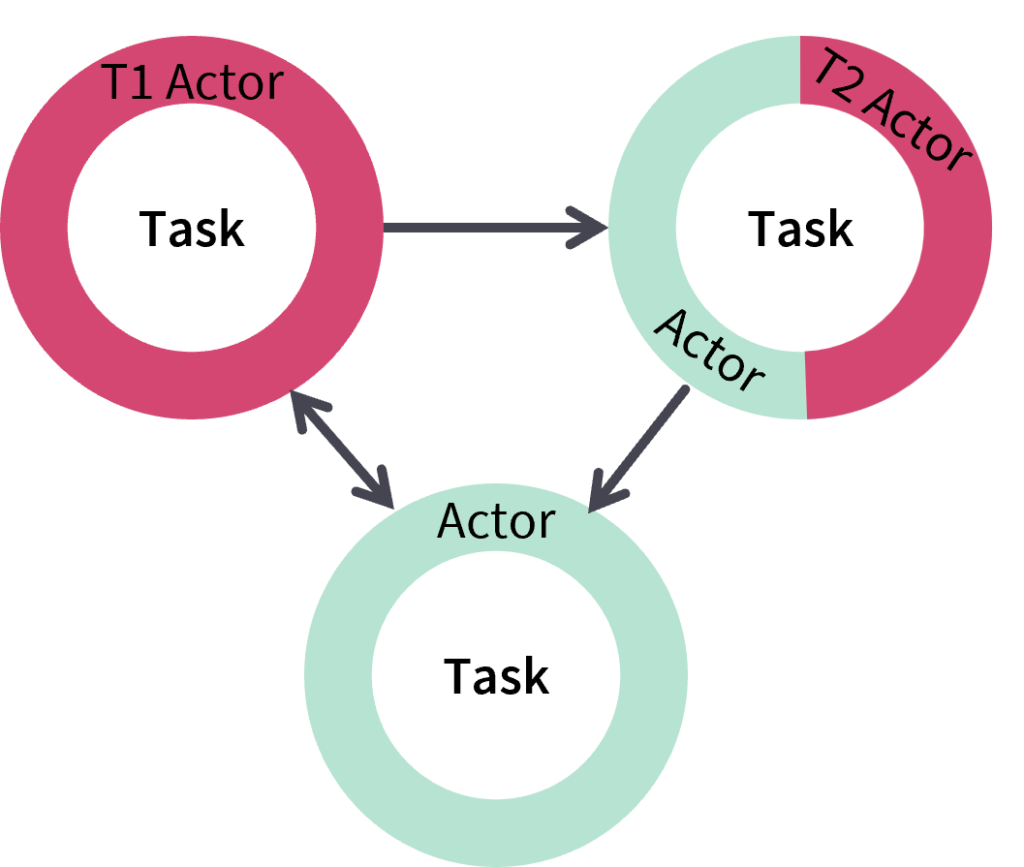
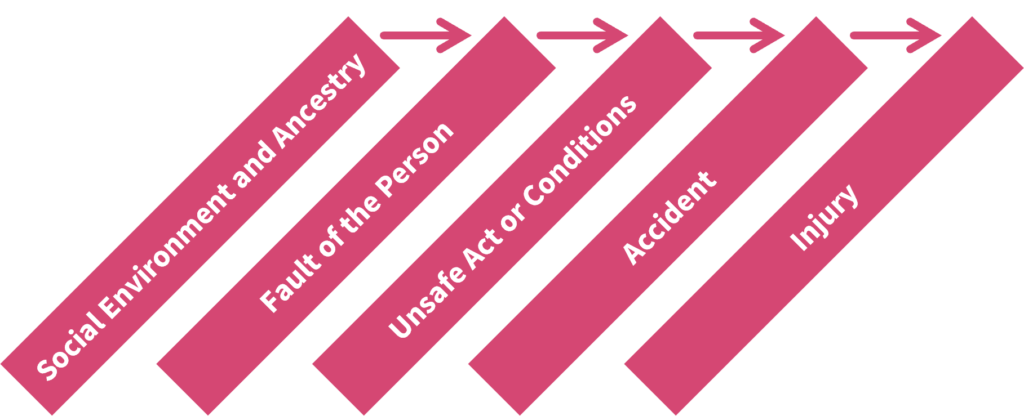
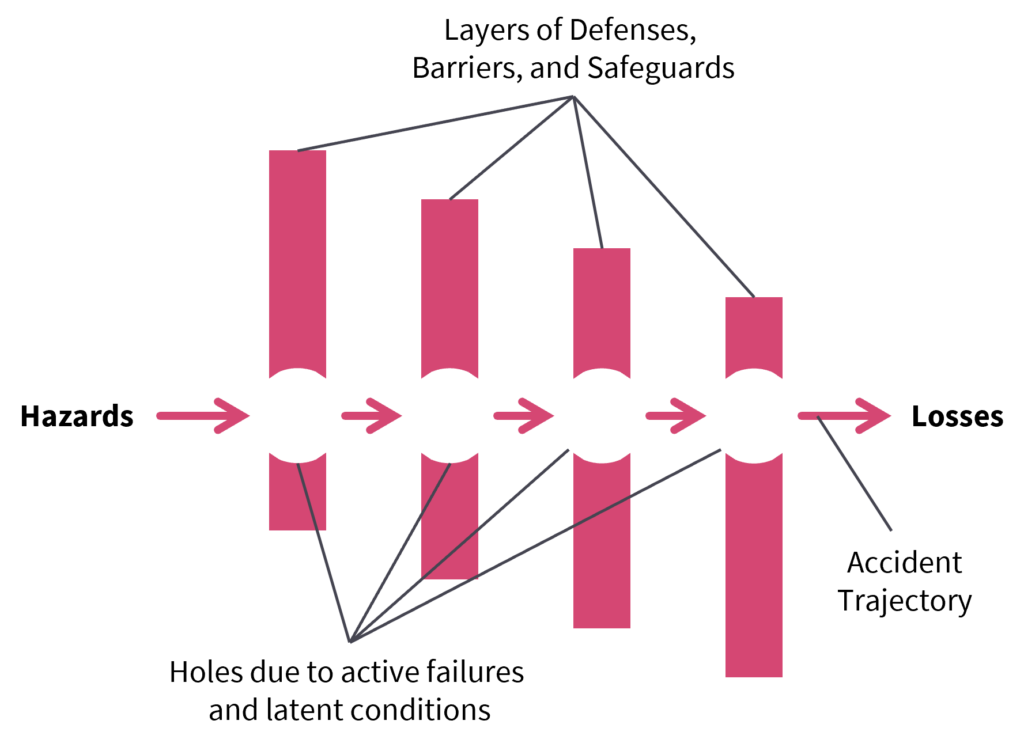
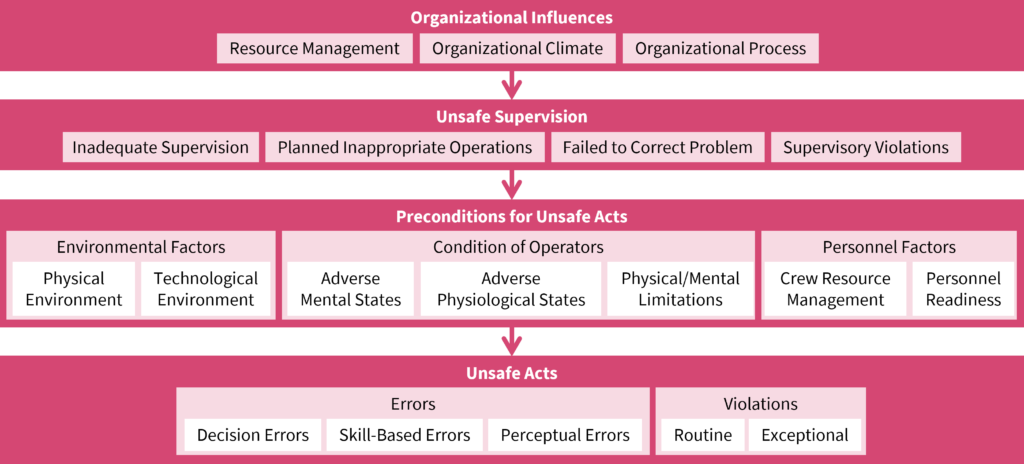
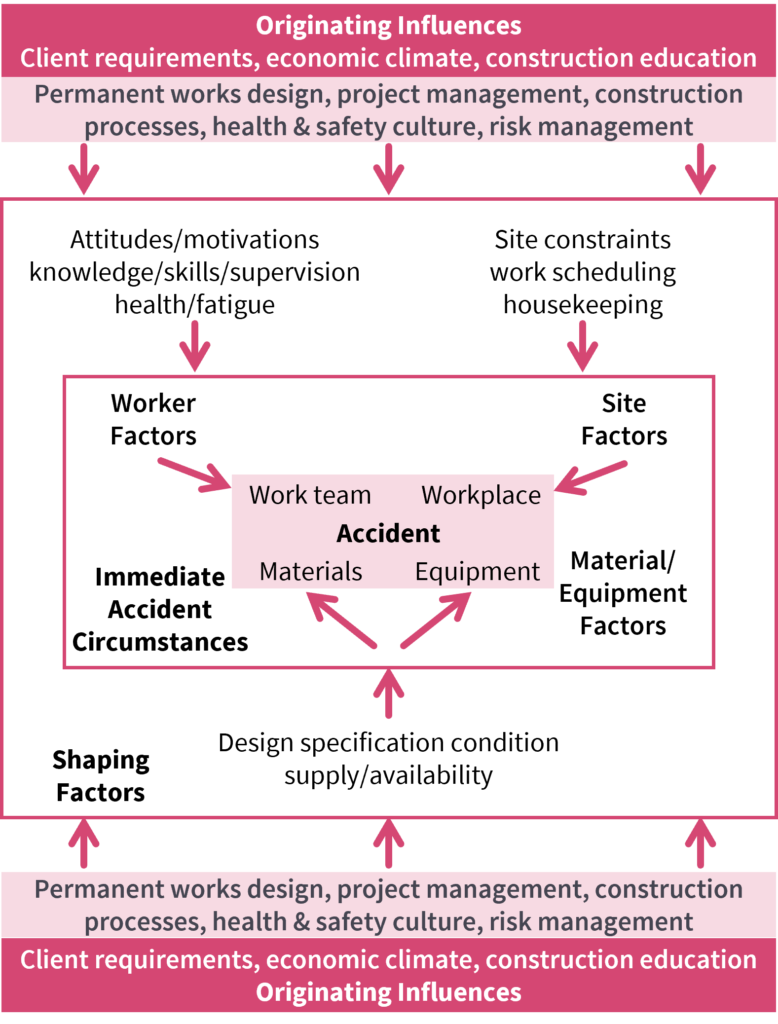


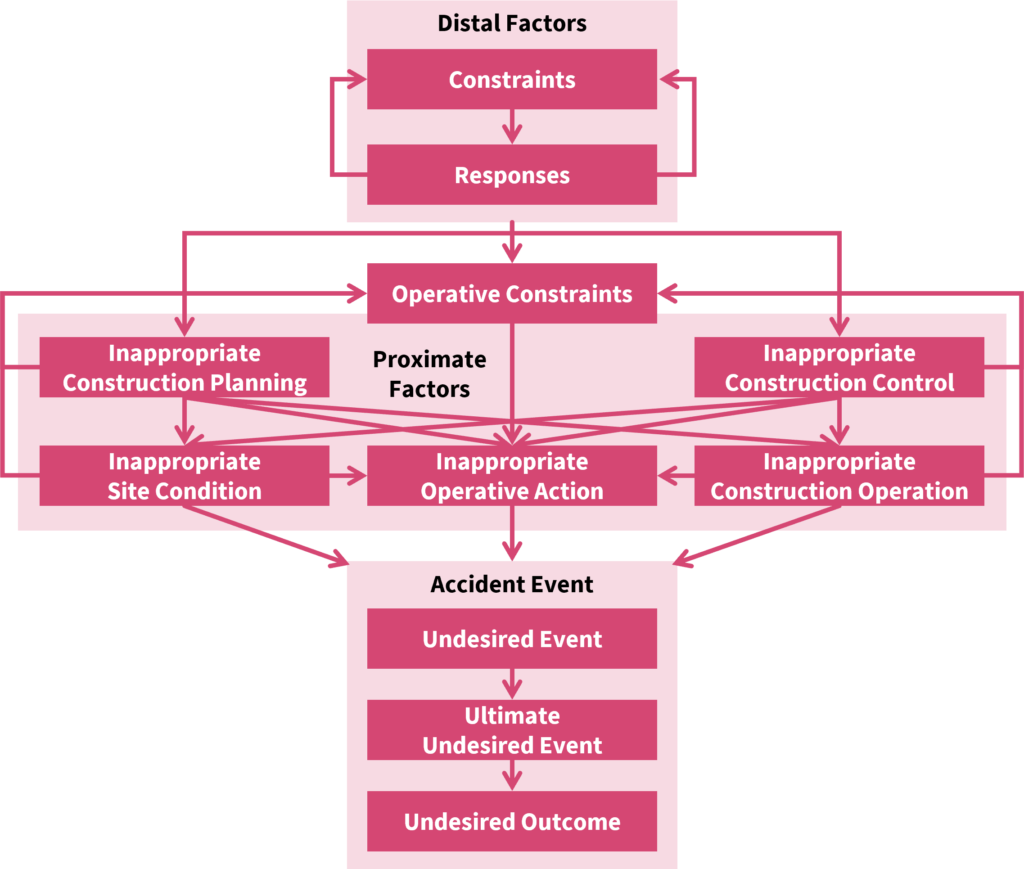
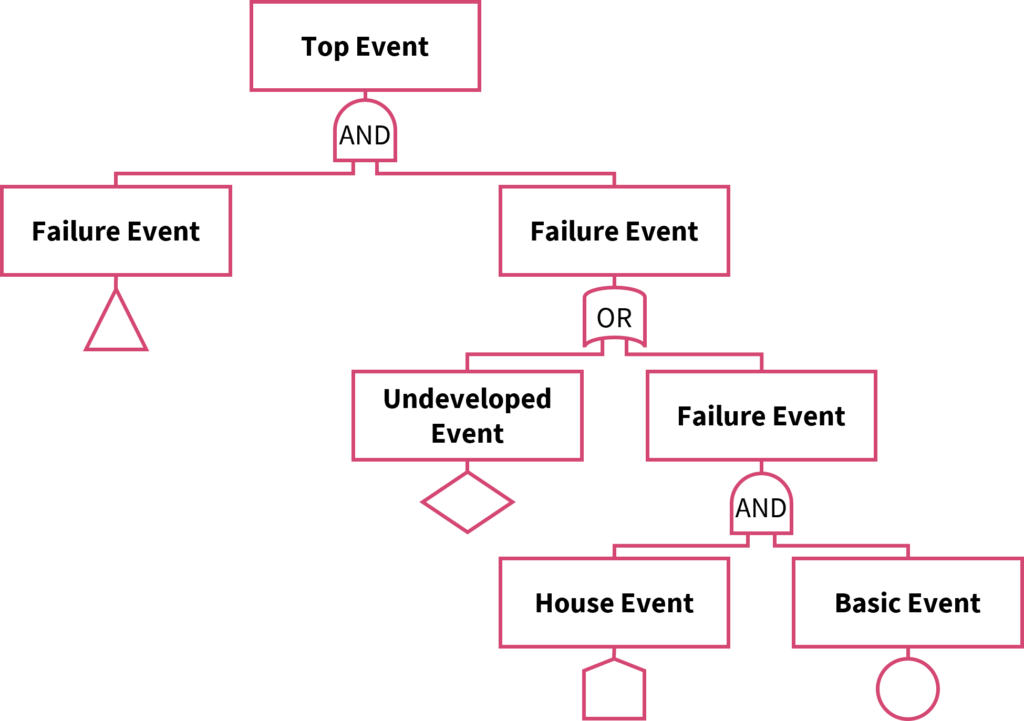
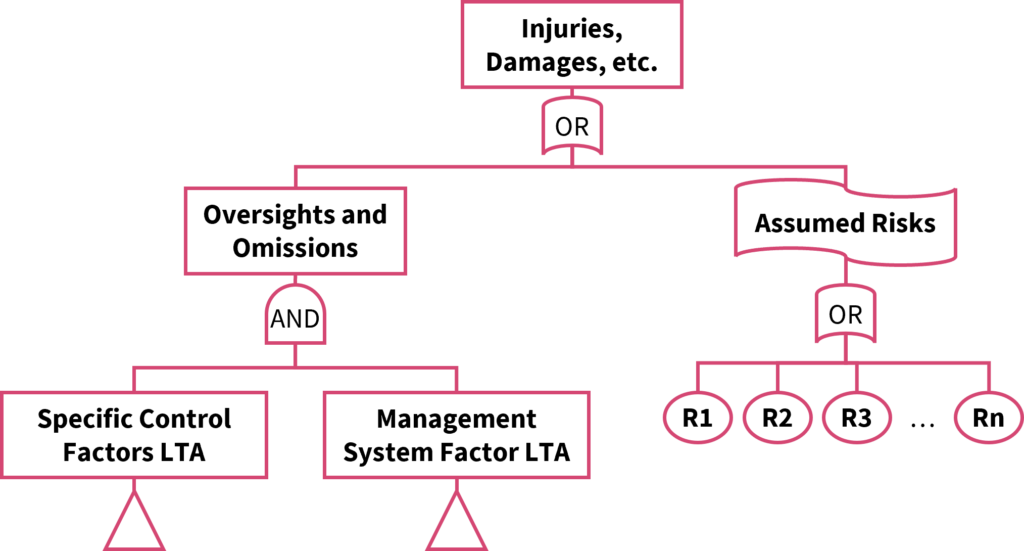
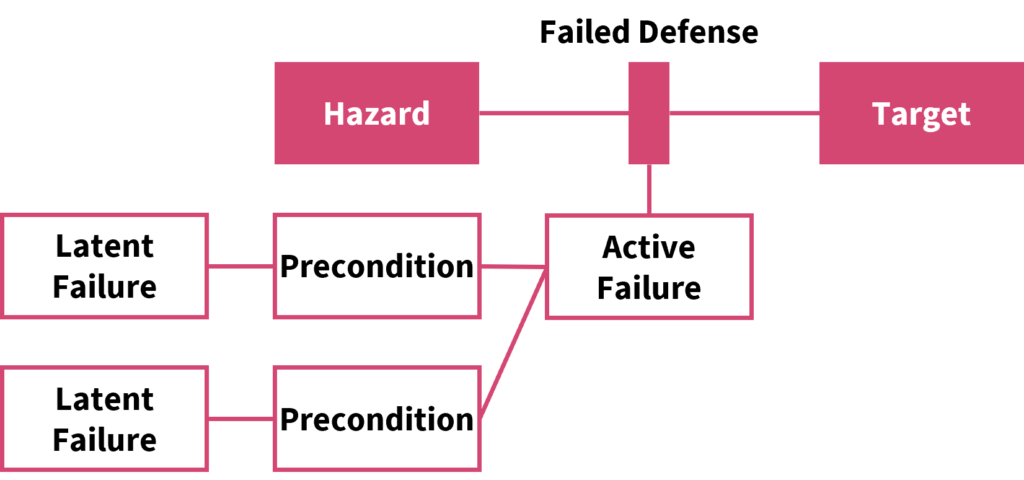
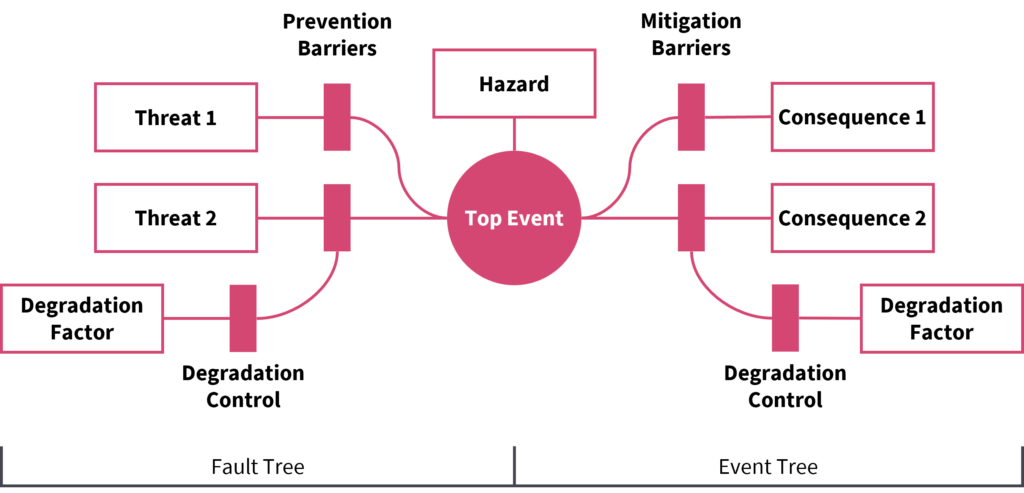
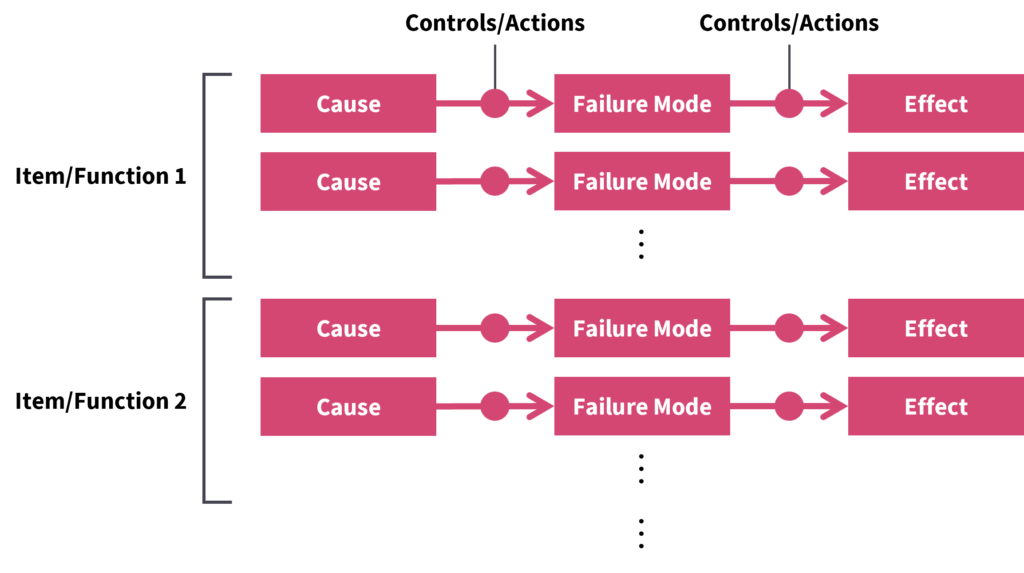
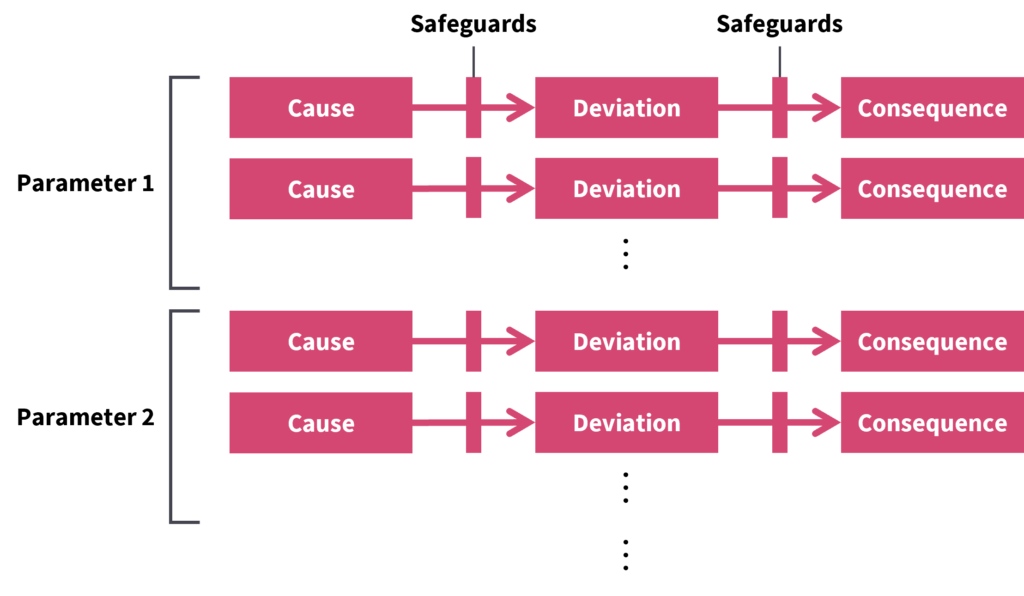
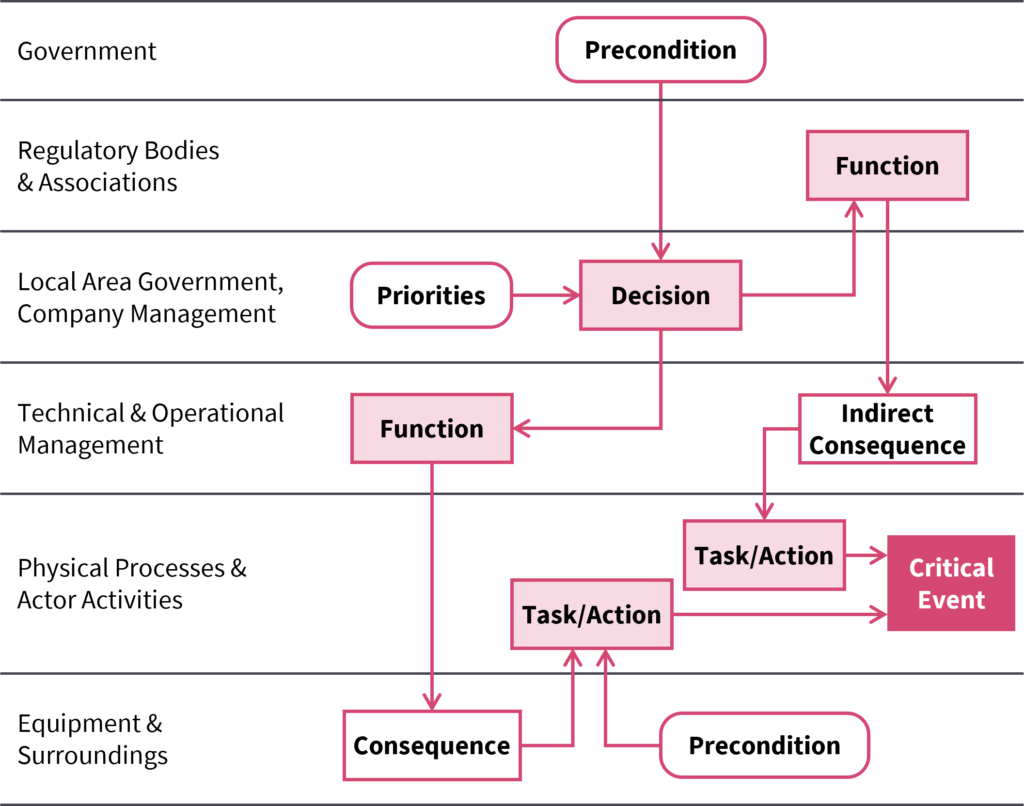
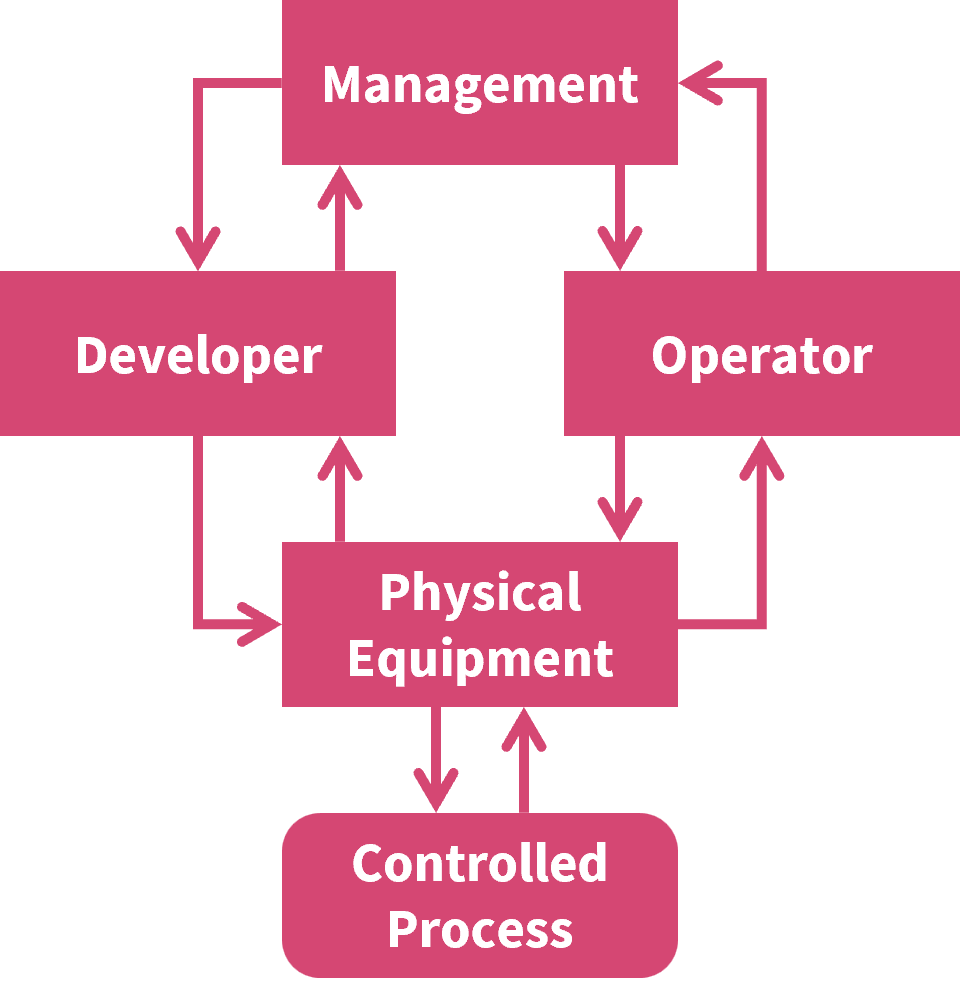
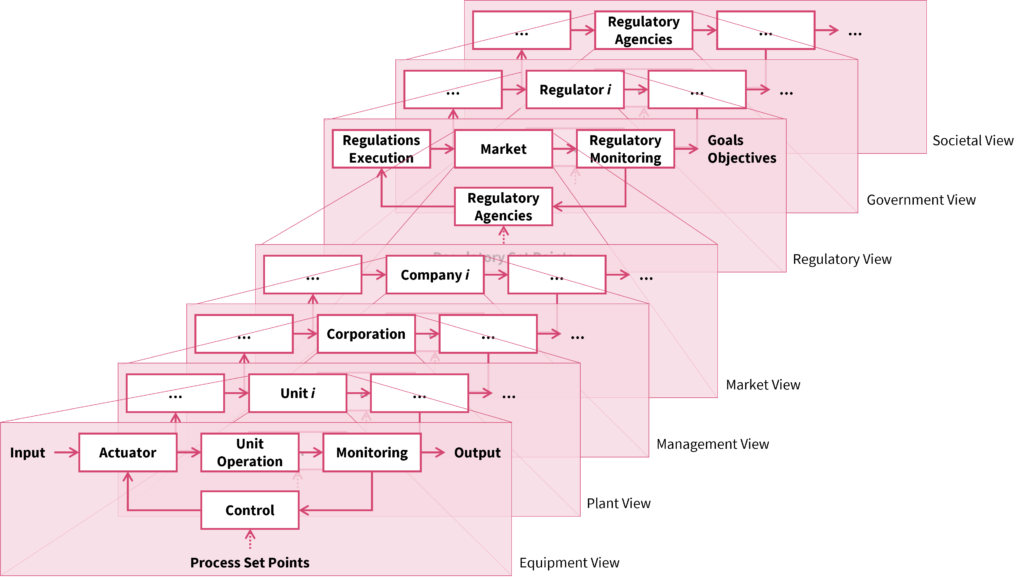
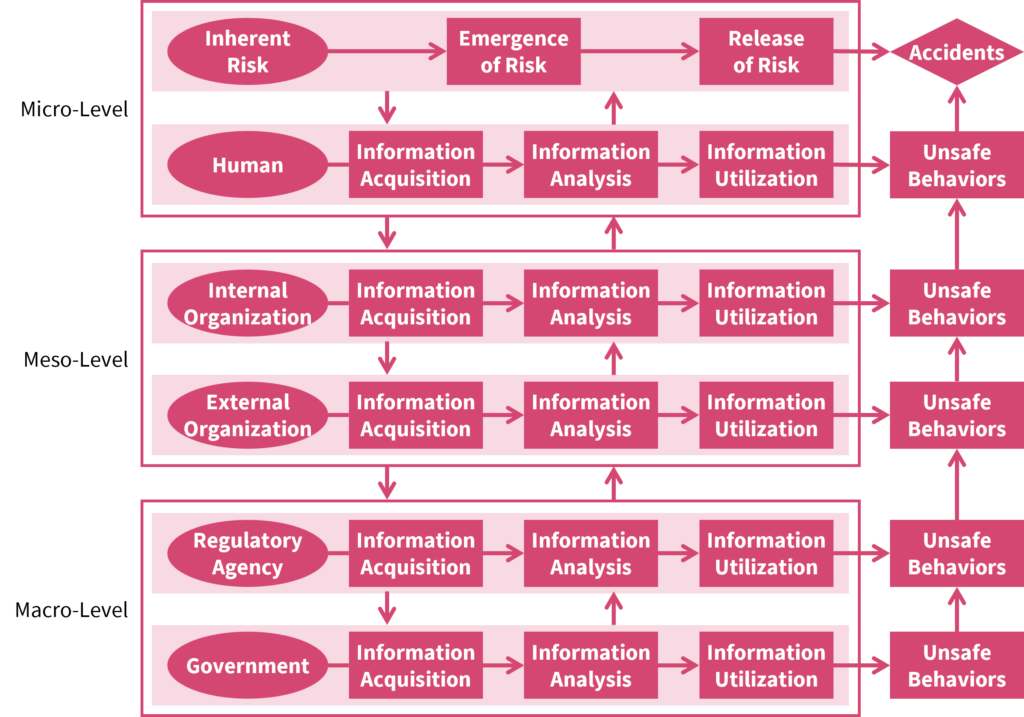
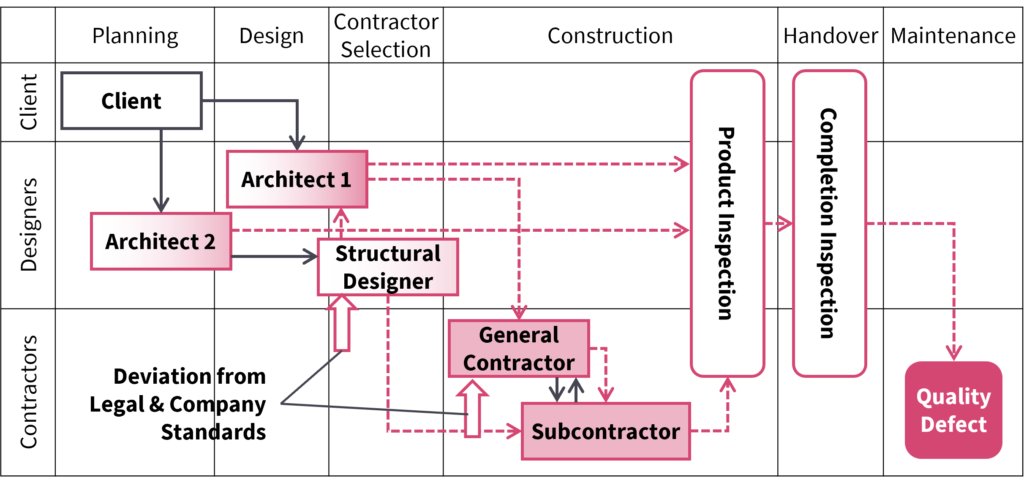
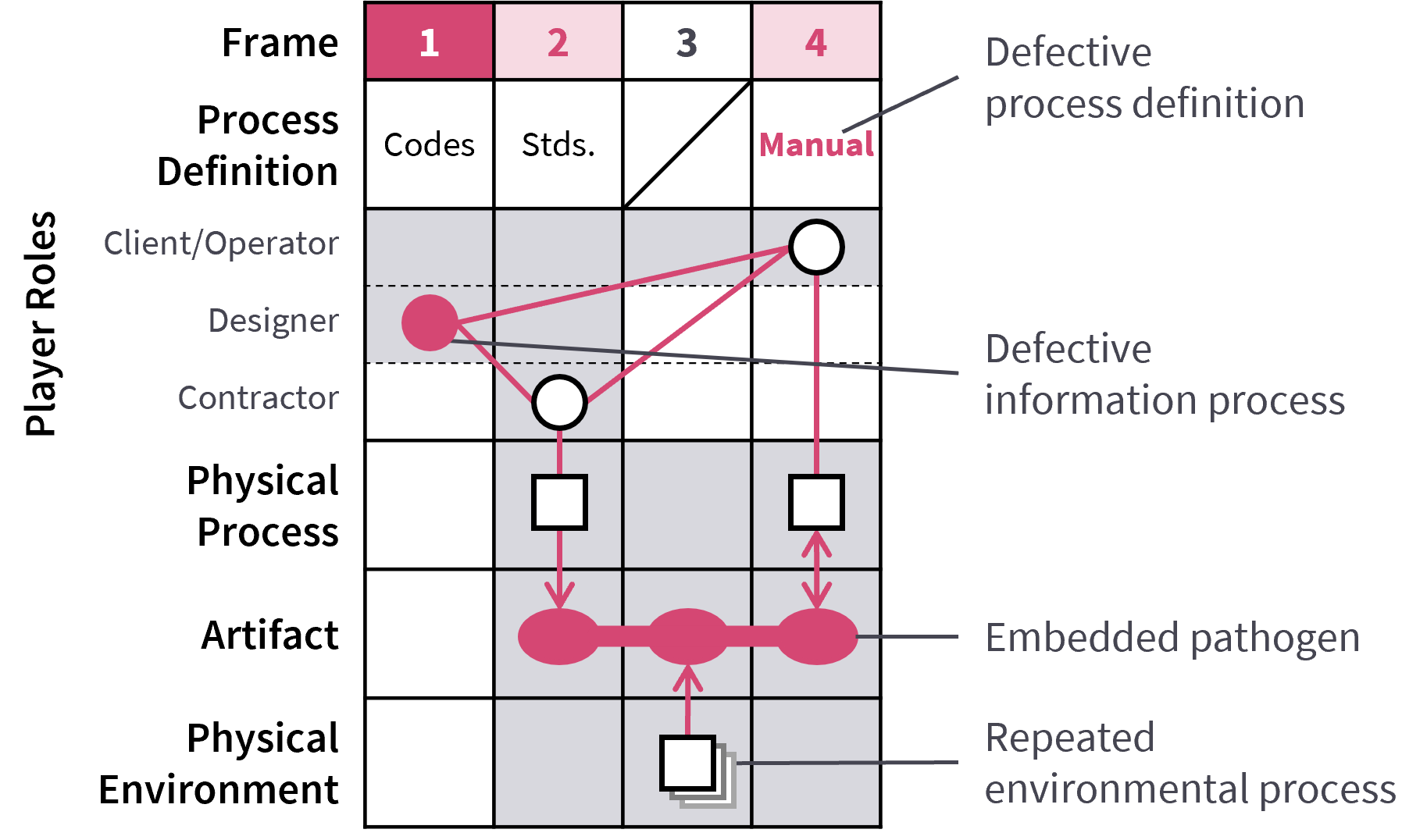
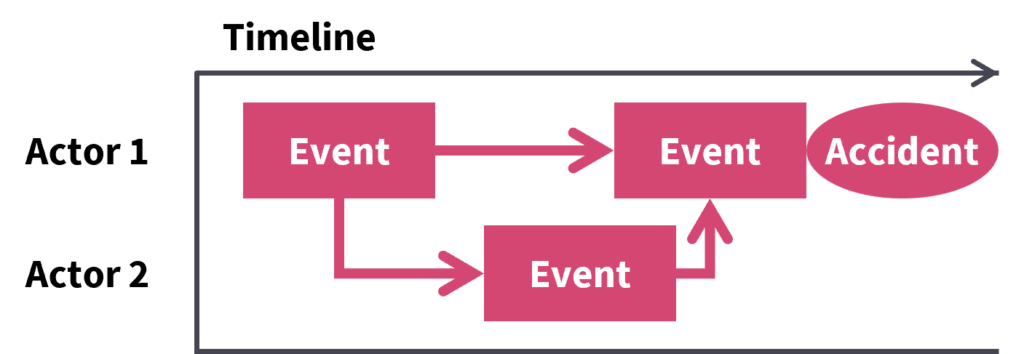
Related Publications
- Igarashi, T., & Marais, K. (2025). Cartography of Accident Causation Models: Remapping the Modeling Landscape. Risk Analysis.
